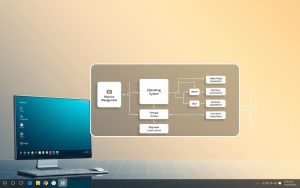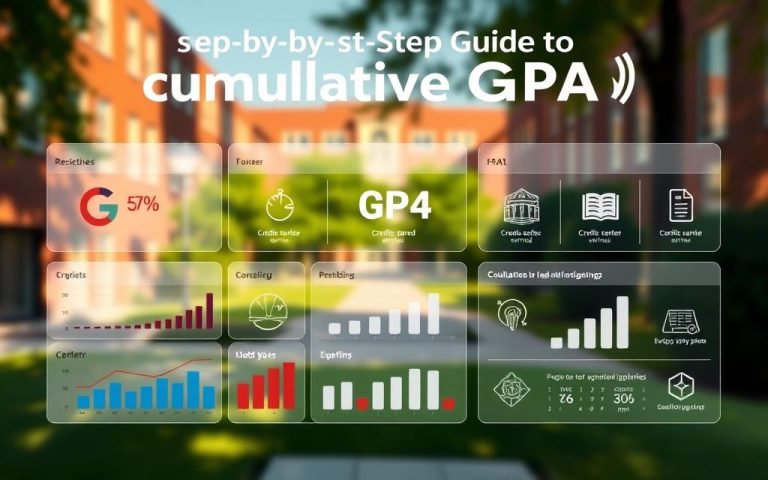What Is a Messaging System in Computer Networks?
Digital communication systems enable real-time interactions across computer networks. They’ve revolutionised how we exchange information, offering instant connectivity. Messaging has evolved from simple texts to comprehensive multimedia platforms.
Computer network messaging uses complex protocols for seamless communication. The communication protocol ensures reliable data transmission between various digital devices. These protocols handle authentication, error management, and efficient message routing.
Instant messaging has grown rapidly. WhatsApp, for example, reached 1.3 billion monthly users in 2018. Modern systems now support multimedia sharing, voice calls, and video chats.
Today’s messaging systems integrate multiple communication channels. This reflects our complex digital world where users connect via different networks. In professional settings, platforms like Slack and Microsoft Teams play a crucial role12.
Understanding Enterprise Messaging Systems
Enterprise messaging systems are vital for modern organisations. They enable smooth communication across complex digital environments. These platforms facilitate efficient message exchange between diverse computer systems3.
Enterprise messaging creates loosely coupled architectures. This minimises disruption when message formats change. Organisations rely on these systems for robust, flexible communication channels4.
Core Components of Enterprise Messaging
Enterprise messaging systems have several essential components. These ensure reliable message transmission:
- Message brokers for inter-service communication
- Protocol conversion mechanisms
- Event handling capabilities
- Data transformation engines
Message Structure Fundamentals
An enterprise messaging system’s message structure has two main elements:
- Message Header: Contains routing information and metadata
- Message Body: Carries the actual payload of communication
Security and Authentication Protocols
Security is crucial in enterprise messaging systems. Modern platforms use advanced authentication protocols. These protect sensitive organisational data4.
| Security Feature | Purpose |
|---|---|
| End-to-end encryption | Protect message contents |
| Multi-factor authentication | Verify user identities |
| Access control lists | Manage system permissions |
These advanced messaging approaches ensure efficient communication. They also maintain strict security standards for organisations3.
Key Features and Architecture of Network Messaging
Network messaging features power modern digital communication systems. The messaging architecture guides information flow between devices and networks5. Various communication models offer unique approaches to message transmission.
Two main network messaging architectures lead the field:
- Peer-to-Peer (P2P) Architecture: Allows direct device communication without central servers5
- Client-Server Architecture: Centralises services through powerful network servers5
Architecture greatly affects network messaging performance and reliability. P2P networks offer better resilience, as individual node failures don’t compromise the entire system5.
Client-server models provide centralised management but may create single points of failure5.

- Real-time communication
- Presence awareness
- Multi-device synchronisation
| Architecture Type | Communication Method | Reliability |
|---|---|---|
| Peer-to-Peer | Direct Device Transmission | High Redundancy |
| Client-Server | Centralised Server Routing | Controlled Management |
Hybrid network approaches are gaining popularity in the messaging world. They blend elements from different architectures to boost communication efficiency5. These flexible models help create robust messaging systems tailored to specific needs.
Messaging System Types and Protocols
Modern computer networks use advanced messaging protocols for seamless communication. These systems enable efficient data exchange between applications and devices6. They form the backbone of digital interactions.
Messaging protocols connect different software systems and enable robust communication channels. Understanding their varied implementations helps organisations choose the best messaging solution7.
Message-Oriented Middleware (MOM)
Message-Oriented Middleware (MOM) helps distributed systems communicate effectively. It manages message transmission, ensuring reliable data exchange between software applications6.
Popular Messaging Protocols
- MQTT: Ideal for low-power applications, particularly in mobile and IoT environments6
- AMQP: Supports end-to-end encryption and secured connections6
- XMPP: Enables near real-time XML data exchanges with multimedia capabilities6
- WebSocket: Provides real-time communication with minimal overhead6
Implementation Methods
Messaging implementation strategies vary based on organisational needs. Businesses can choose from standalone applications, browser-based clients, or integrated enterprise solutions7.
| Protocol | Key Features | Primary Use |
|---|---|---|
| MQTT | Lightweight, low power consumption | IoT and mobile devices6 |
| AMQP | Secure, reliable messaging | Enterprise communication7 |
| XMPP | Versatile data exchange | Consumer software6 |
Choosing the right messaging protocol requires careful evaluation. Consider specific communication needs, network constraints, and performance requirements7.
A System for Exchanging Messages Through a Computer Network
Modern message exchange systems revolutionise network communication. They enable smooth digital interactions across various platforms. These advanced messaging platforms connect users through complex computer networks8.
Instant communication and information sharing are now possible. Users can connect instantly, regardless of their location9.
Instant messaging systems offer multiple connection methods for users:
- Direct user connections via contact lists
- Group chat environments
- Integrated platform messaging
- Conversational commerce interfaces
These systems focus on managing user connections. They ensure reliable message routing across the network8.
Different network structures support various messaging designs. Star and mesh layouts provide strong communication frameworks8.
| Messaging System Type | Key Characteristics |
|---|---|
| One-to-One Messaging | Direct personal communication |
| Group Messaging | Multi-user collaborative platforms |
| Enterprise Messaging | Professional communication networks |
Network communication tech keeps improving. It uses advanced methods to make message exchange faster9.
The sophisticated layering of modern messaging systems is crucial. It ensures secure and quick information sharing across different digital spaces10.
Evolution of Instant Messaging and Mobile Integration
Digital communication has changed drastically since 1992’s first text message. IM’s journey has reshaped global connections through mobile messaging. This evolution has transformed how people interact worldwide.
- The release of the first texting phone, Nokia 9000i Communicator, in 199711
- Cross-network text messaging enabling business communications in 199911
- WhatsApp’s founding in 2009, revolutionising mobile messaging11
By 2013, mobile instant messaging overtook traditional SMS globally. This shift changed communication patterns worldwide. Free data-based messaging apps replaced paid telephone services.
Modern messaging platforms now offer advanced features. These include location sharing, mobile payments, and rich communication services (RCS). Such features make instant messaging crucial in daily digital life.
Interoperability and Standardisation Efforts in Messaging Systems
Messaging interoperability has grown significantly, driven by the need for seamless communication standards. Organisations now recognise the importance of unified messaging protocols. These enable different systems to communicate effectively1213.
Key standardisation initiatives have emerged to address communication challenges:
- Session Initiation Protocol (SIP)
- Extensible Messaging and Presence Protocol (XMPP)
- Instant Messaging and Presence Protocol (IMPP)
Messaging interoperability has significant implications for various sectors. In telecommunications, seamless communication between mobile carrier operators is now crucial12.
Research shows organisations using interoperable systems can boost operational efficiency. Some report up to a 40% increase in data exchange capabilities13.
Syntactic and semantic interoperability are advanced stages of system integration. These ensure both technical compatibility and meaningful information exchange across platforms12.
Challenges remain, with 70% of communication failures linked to interoperability issues. However, international standards bodies and technology consortia continue to improve unified messaging ecosystems13.
The ultimate goal remains creating communication systems that transcend traditional technological boundaries.
Conclusion: The Future of Messaging Systems in Computer Networks
Network communication is evolving rapidly, with messaging systems driving digital transformation. Future trends point to smarter, more secure, and adaptable communication platforms14. Distributed messaging systems will transform how organisations handle information, boosting scalability and eliminating weak points14.
AI and quantum computing are set to reshape messaging infrastructures. Real-time data processing will become crucial in IoT, finance, and event-driven architectures14. Cloud networks and advanced protocols will support these sophisticated communication ecosystems15.
Security remains a top priority in future network communication. Strong encryption and multi-layered authentication will protect sensitive data transmission15. As systems grow more complex, organisations must invest in scalable infrastructure with high security standards14.
Messaging systems are heading towards a more integrated and resilient future. By adopting new technologies and focusing on user experience, these systems will continue to drive global digital communication. They’ll foster collaboration across diverse technological landscapes, connecting people worldwide.
FAQ
What is a messaging system in computer networks?
How do enterprise messaging systems ensure security?
What are the primary architectural models for network messaging?
What are some popular messaging protocols?
How have mobile technologies transformed messaging systems?
What is Message-Oriented Middleware (MOM)?
What challenges exist in messaging system interoperability?
What emerging trends are shaping the future of messaging systems?
How do messaging systems handle message routing?
What implementation methods exist for messaging systems?
Source Links
- https://en.wikipedia.org/wiki/Instant_messaging
- https://www.techtarget.com/searchnetworking/definition/protocol
- https://en.wikipedia.org/wiki/Enterprise_service_bus
- https://www.ibm.com/think/topics/message-brokers
- https://www.kentik.com/kentipedia/network-architecture/
- https://getstream.io/blog/messaging-protocols/
- https://www.cloudamqp.com/blog/amqp-vs-mqtt.html
- https://ascendantusa.com/2024/12/23/what-is-a-computer-network/
- https://textbook.cs161.org/network/intro.html
- https://en.wikipedia.org/wiki/Communication_protocol
- https://www.messagedesk.com/blog/text-messaging-history-timeline-evolution
- https://en.wikipedia.org/wiki/Interoperability
- https://www.techtarget.com/searchapparchitecture/definition/interoperability
- https://www.geeksforgeeks.org/distributed-messaging-system-system-design/
- https://www.theknowledgeacademy.com/blog/what-is-a-computer-network/













